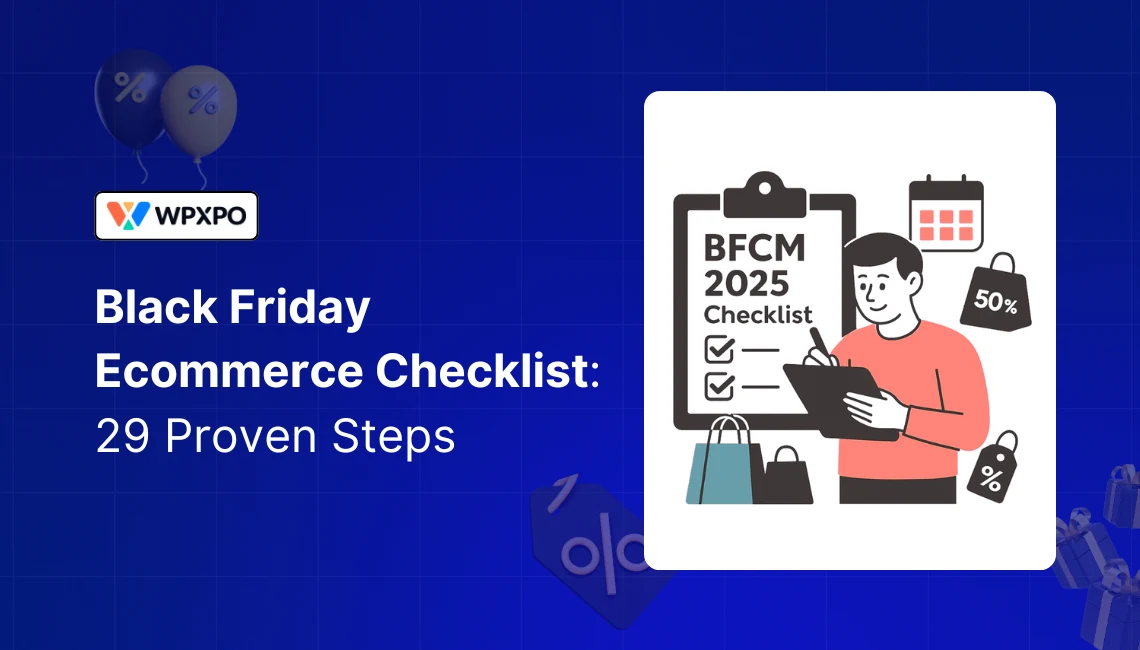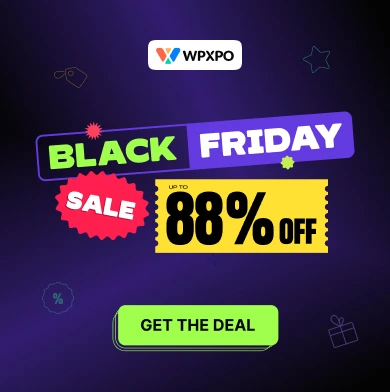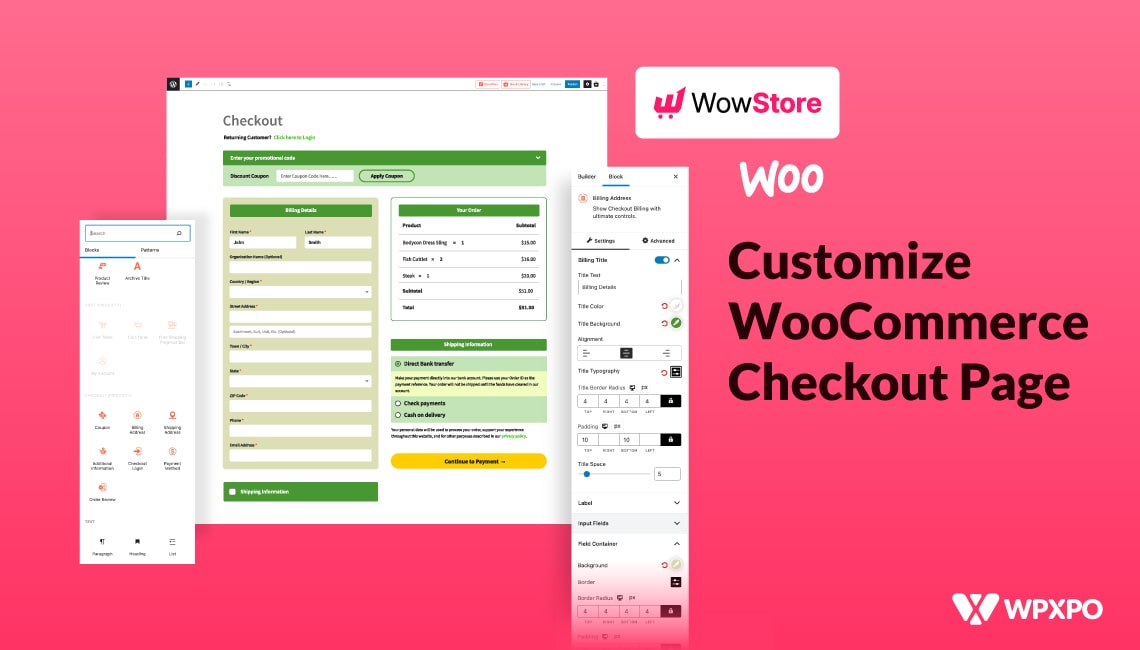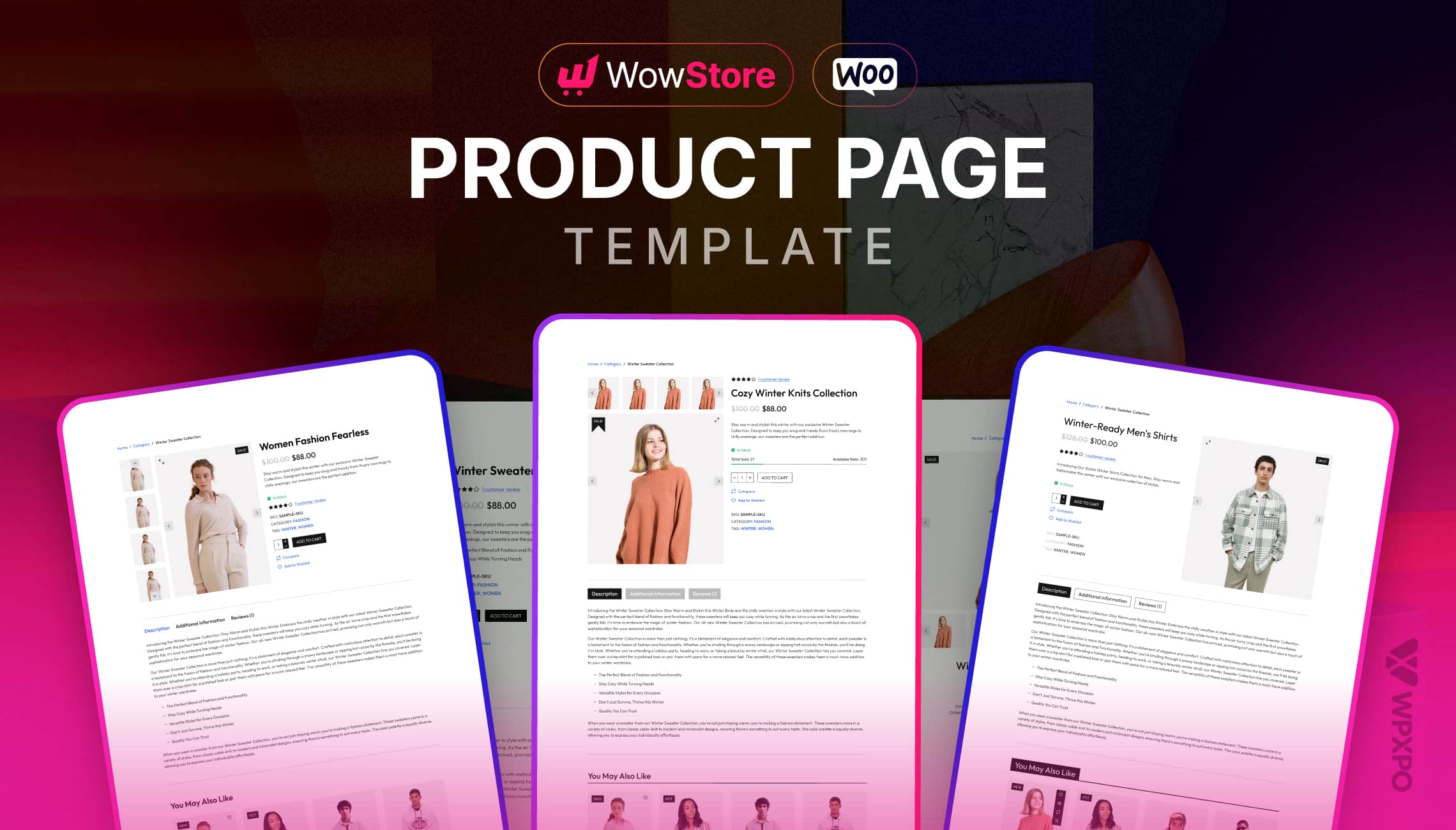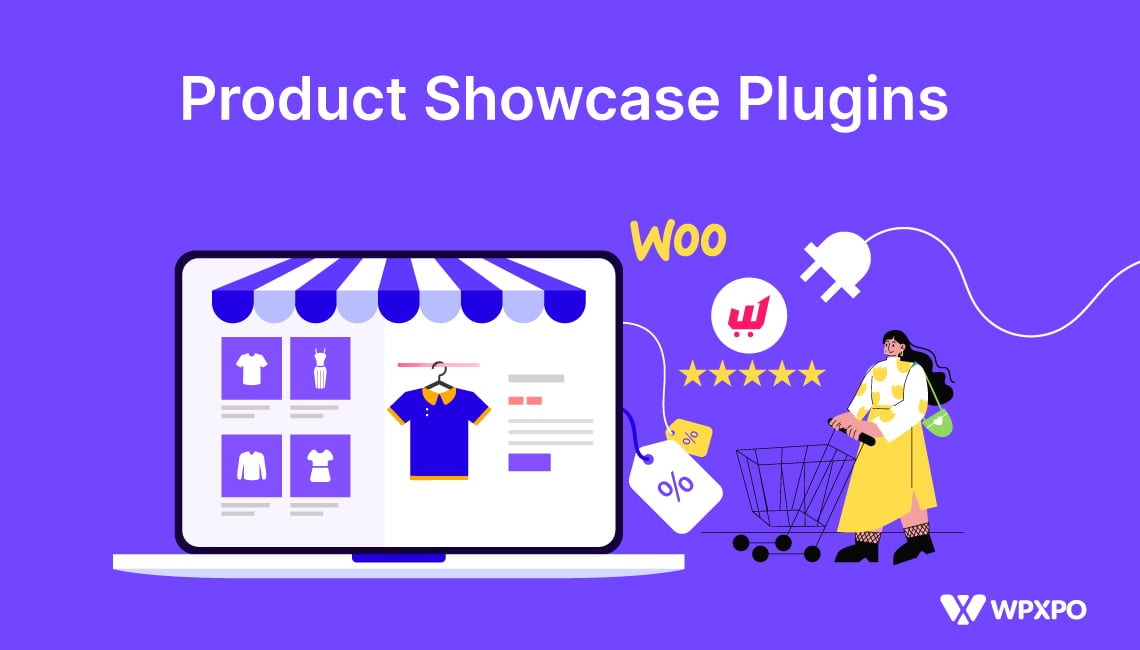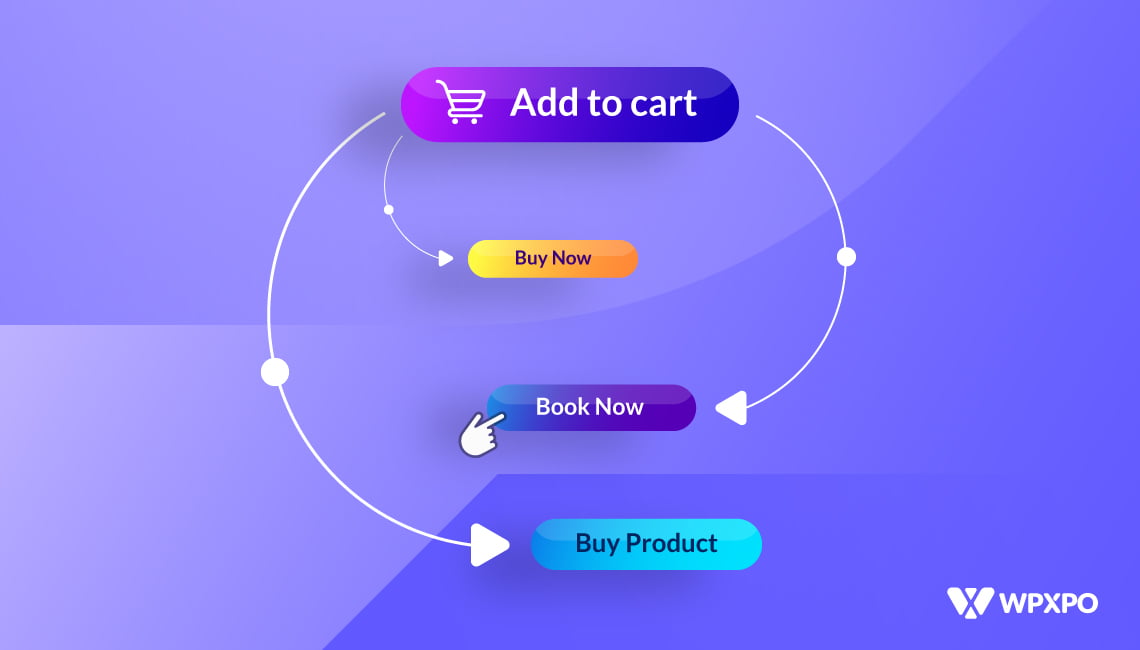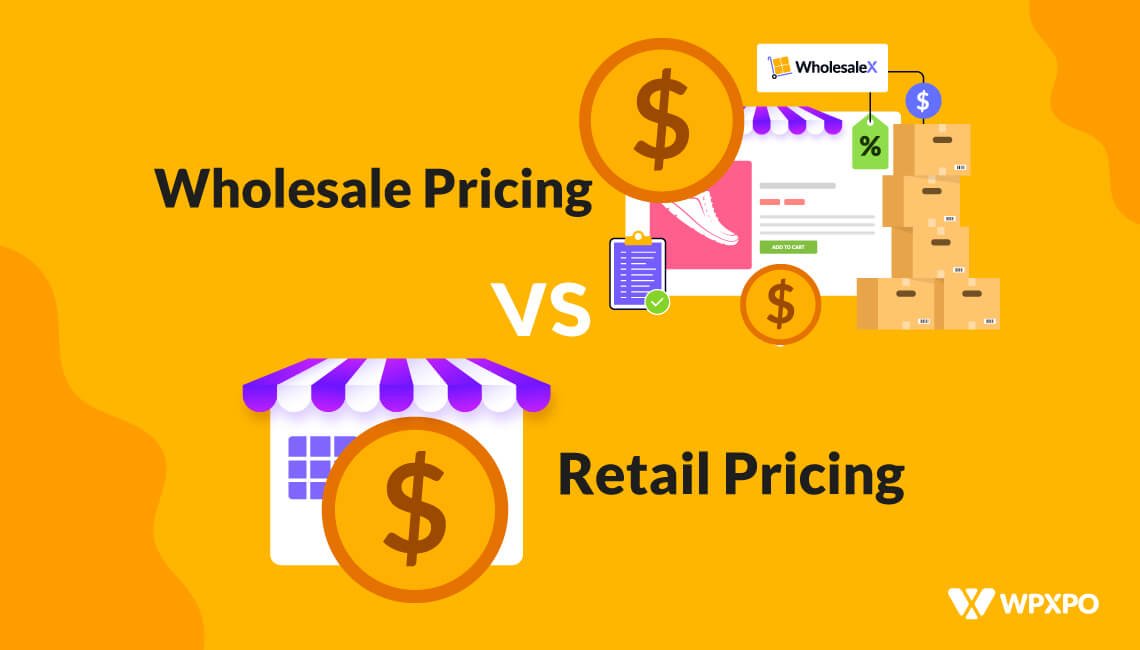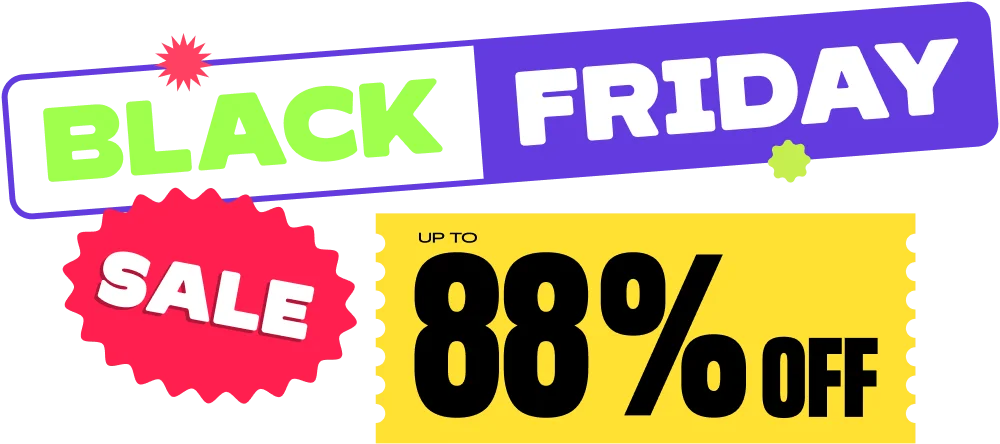Analysts project the 2025 Black Friday/Cyber Monday (BFCM) weekend will once again shatter all previous online spending records. This is the Super Bowl for e-commerce.
But for scaling 7- and 8-figure stores, success isn’t about just “offering a discount.” It’s about rigorous, obsessive preparation. In a high-stakes environment, a single un-tested link, a slow server, or a stock error can instantly wipe out your entire weekend’s profit.
This isn’t a beginner’s guide. This is the strategic framework built from 15+ years of scaling online stores through this very weekend. This Black Friday ecommerce checklist is broken down into the three pillars of success: Technical Readiness, Marketing Offense, and Operational Excellence.
Let’s get to work.
Be smart! Grab the best WordPress Black Friday deals and discounts of 2025 now while others are still deciding.
TL;DR: The 2025 Black Friday Ecommerce Checklist & Strategy Guide
This comprehensive BFCM checklist for ecommerce provides a 6-month battle plan for scaling 7- and 8-figure stores. It moves beyond simple discounts to focus on rigorous preparation for a record-breaking sales weekend.
The strategy is built on four key pillars:
- Pillar 1: Technical Readiness: A non-negotiable checklist to prevent crashes. This includes load-testing your server, optimizing mobile-first checkout, enabling one-click payments (Shop Pay, Apple Pay), and testing all payment gateways to ensure 0% friction.
- Pillar 2: Marketing & Promotion: Your offensive plan for driving profitable traffic. This covers finalizing your offer strategy (sitewide vs. bundles), obsessively checking profit margins, and hyper-segmenting your email/SMS lists, especially for VIP early access.
- Pillar 3: Operations & Logistics: The plan for flawless fulfillment. This involves accurate inventory audits to prevent overselling, coordinating with 3PLs, stockpiling shipping supplies, and staffing up your customer support team with pre-written responses.
- Pillar 4: Post-BFCM Profit Phase: A guide to extending revenue into December. This outlines how to immediately segment and analyze new BFCM buyers, launch retention campaigns, and convert one-time discount shoppers into high-LTV brand loyalists.
The article also includes a vital “Day Of” Launch Checklist (a last-minute BFCM checklist) to ensure your team is aligned and ready to monitor all systems as the sale goes live.
Your Strategic BFCM Timeline: A 6-Month Battle Plan
Let’s be clear: BFCM isn’t a “one-week” event. It’s a six-month campaign that culminates in a 96-hour sales sprint. The brands that win are those that have their assets, tech, and inventory locked in by October, not those scrambling in November.

First, mark your 2025 revenue-critical dates.
The 2025 Peak Revenue Window
- Black Friday: November 28, 2025
- Small Business Saturday: November 29, 2025
- Cyber Monday: December 1, 2025
- Green Monday: December 8, 2025 (This is an often-overlooked goldmine for “last-minute” holiday shoppers).
Here is the 6-month battle plan to make those dates profitable. This checklist is comprehensive, and it can be overwhelming. The only way to win is to execute it in phases.
Phase 1: Foundation & Forecasting (July – August)
This is your strategic planning phase.
- Analyze Data: Dig into your 2024 data. What were your top sellers? What was your AOV? Where did your site leak conversions? What was your true profit margin after ads?
- Lock in Supply Chain: Confirm your Q4 inventory orders with suppliers. With ongoing freight delays, “early” is “on time.”
- Secure Fulfillment: Confirm your 3PL or warehouse is staffed and ready for a 10x surge in volume. This is non-negotiable (see Pillar 3).
- Start List Growth: Your email and SMS lists are your only “owned” traffic. Begin your “always-on” list growth campaigns now. A larger list in November is a direct multiplier on sales.
- Draft Offer Strategy: Start modeling your discount strategy. Will you do a sitewide discount, tiered spending, or value-add bundles? (see Pillar 2).
Phase 2: Asset Production & Campaign Build (September – Mid-October)
This is your production sprint. By mid-October, 80% of the work should be done.
- Finalize Offers & Margins: Lock in your exact offers. Model them to ensure every sale is profitable.
- Build All Assets: This is the creative grind. Write and design your entire email flow (teaser, launch, abandonment, last chance), all SMS messages, all ad creatives, and all on-site banners.
- Conduct Initial Tech Audit: Begin executing the Pillar 1: Technical Readiness checklist now. Test site speed, audit the checkout flow, and fix 404s before you’re in a code freeze.
- Build Your Segments: Prepare your key audience segments (VIPs, 2024 BFCM buyers, non-buyers) in your email and ad platforms.
Phase 3: The Pre-Sale Gauntlet (Mid-October – Mid-November)
This is the testing and warm-up phase. The goal is to be 100% “launch ready” by November 15.
- Implement a “Code Freeze”: Pick a date (e.g., November 10th) after which no new code or risky apps are deployed to your site. This prevents last-minute, self-inflicted disasters.
- Conduct Full Load Tests: Run a final stress test on your site (see Pillar 1).
- Train Your Support Team: Your support team is your frontline. Staff up and drill them on the Top 5 questions and prepared responses (see Pillar 3).
- Warm Up Your Audience: This is a pro move. Launch a “Pre-BFCM” teaser campaign or an “Early Access” offer to your VIP list. This builds hype, creates social proof, and tests your entire system (site, checkout, fulfillment) before the real surge hits.
Phase 4: The Final Countdown (The Week Before BFCM)
This is the final last minute bfcm checklist.
- Test Everything. Again. Click every link. Test every coupon code. Run a final test transaction on every payment gateway.
- Double-Check Inventory: Ensure your stock levels are 100% accurate (see Pillar 3).
- Monitor Early Sales: Watch the data from your VIP early access. Be ready to pivot your ad creative or offer if a campaign is underperforming.
Pro Tip: Treat December as your second biggest revenue month. With Green Monday (Dec 8), last-minute shipping deadlines, and holiday gifting, you can often capture an additional 15-20% boost in revenue from the same audience you just acquired. Don’t stop on December 2nd.
Why Starting Early Is Non-Negotiable
- Ad Costs Skyrocket: The closer you get to Black Friday, the more expensive ad inventory becomes. Having your campaigns ready and tested in October gives you a massive efficiency advantage.
- Customers Shop Early: Shoppers no longer wait for Friday. High-intent buyers are researching and purchasing “early-bird” deals from the first week of November. If you launch too late, you miss them.
- Murphy’s Law is Real: Something will go wrong. A 3PL will miss a shipment. An app will break. Your payment gateway will go down. This timeline bakes in the buffer time you need to fix the unexpected without panicking.
You can adjust each “weeks before” phase to fit your market and scale. A backward plan keeps key tasks on track and leaves room for surprises.
Pillar 1: Technical & Website Readiness (The “No-Crash” Plan)
Your site is your digital flagship store. If the doors are locked (a server crash) or the checkout line is agonizingly slow (page speed), you lose. This is where you harden your foundation.
Optimize for Speed & Scale
- Load Test Your Site: Don’t guess, know. Can your server and database handle 10x your average daily traffic? Use services like LoadNinja, k6, or BlazeMeter to simulate a traffic surge now, not during the launch.
- Audit the Mobile-First Journey: Over 60% of sales will happen on a phone. Audit your entire funnel on mobile (iOS and Android): homepage, category page, product page, cart, and the full checkout process. Is it fast, seamless, and thumb-friendly?
- Optimize the Checkout Flow: This is where you make or lose money. Remove every unnecessary field. Is ‘Address 2’ optional? Is guest checkout prominently enabled?
- Deploy & Test One-Click Checkouts: This is no longer optional. Shop Pay, Apple Pay, Google Pay, and PayPal Express are critical. Real-world data shows these can increase conversion rates by up to 50% by reducing friction.
- Test All Payment Gateways: Don’t assume they work. Run a $1 test transaction on every single method: PayPal, Stripe (all card types), and every Buy Now, Pay Later (BNPL) option you offer. A failing gateway is a 0% conversion rate.
The User Experience (UX) Audit
- Homepage “Hero”: When a user lands, they must know in one second what the offer is. Is your main BFCM ‘Hero’ banner clear, compelling, and does it click through to the correct sale collection?
- Deploy Site Banners & Popups: Get your announcement bars, exit-intent popups, and email-capture forms pre-built. Test the triggers and countdown timers. Ensure they are mobile-responsive and don’t create a “popup hell” that blocks the ‘Add to Cart’ button.
- Hunt Down 404 Errors: A 404 page is a dead-end for a motivated buyer. Run a full site crawl (use Screaming Frog or your SEO tool) and redirect all 404s to active pages or your main sale category.
- Activate AI & SMS Cart Recovery: Standard email-only cart abandonment is not enough. Implement a multi-channel recovery sequence. Use SMS reminders and AI-powered chatbots to re-engage shoppers who abandon, as they have significantly higher open and conversion rates.
- Build Your Contingency Plan: What if your payment gateway fails? Or your 3PL’s API goes down? Have a written plan, with contact numbers and “Plan B” scenarios (e.g., “how to manually disable PayPal checkout”) ready.
Pillar 2: Marketing & Promotion (The “Traffic & Conversion” Plan)
A perfect site with no traffic earns zero. This is your offensive game plan. This comprehensive bfcm checklist for ecommerce marketing ensures you drive, and convert, the right customers.
Finalize Your Offers
- Define Tiers & Strategy: Clarity over complexity. Real-world data shows that a simple, clear offer (e.g., “20% off sitewide”) often outperforms a confusing tiered offer. Lock in your strategy: Is it sitewide, tiered, or high-velocity ‘Doorbuster’ deals?
- Check Margins (Obsessively): This is the step amateurs skip. Review your landed cost, ad spend, and transaction fees. Confirm profitability for every single discounted SKU. It is better to exclude a low-margin item from the sale than to lose money on every unit sold.
- Create & Test Coupon Codes: Generate and test all codes. Does the code
BFCM30work? Most importantly: does it improperly stack with other codes? Many stores lost thousands in 2024 from unforeseen “discount stacking.”
Real-World Pitfall: The “Margin Massacre”
Many owners reported in their 2024 post-mortems that they “won” on revenue but lost on profit. Deep 50%+ discounts killed their margins.
The Pro-Move: Consider value-adds over deep discounts.
- Bundles: “Buy 2, Get 1 Free” or pre-made “Holiday Kits.”
- Gift with Purchase (GWP): “Free $25 item on orders over $100.”
- Mystery Boxes: A high-perceived-value offer that helps clear old inventory.
Email Marketing Campaign
- Go All-In on Your VIPs: This is your most profitable segment. Your bfcm checklist must include an early-access campaign (24-48 hours) for your VIPs (past buyers, loyalty members). They deserve the first look and are your most likely converters.
- Hyper-Segment Your List: Do not “batch and blast” your entire list. This kills deliverability and annoys customers. Segment by:
- VIPs (get early access)
- Past BFCM Buyers (know what they want)
- Recent Engagers (Last 90 Days) (this is where 90%+ of your revenue will be)
- Unengaged List (Send them one, maybe two “win-back” offers, or don’t email them at all).
- Write & Schedule the Full Sequence: Your entire sequence should be written, designed, and scheduled in your ESP (Klaviyo, Mailchimp, etc.) days in advance. This includes your hype/teaser, launch, cart abandonment, and “last chance” emails.
- Test Every Email Link: This is non-negotiable. Click every single link (images, buttons, text links) in your test emails. Do they go to the right product/collection? Is the UTM tracking correct?
Activate Your SMS & Omnichannel Plays
- Prep Your SMS Campaign: SMS is no longer optional. Stores that integrate SMS with email see a massive lift in revenue. Prepare your SMS-exclusive flash sales and cart abandonment texts. Warning: Be mindful of send times and frequency.
- Schedule Your Social Blitz: Use a scheduler (Later, Buffer, etc.) to prepare your entire social media launch. This includes Instagram Stories with ‘Shop Now’ stickers, high-energy TikToks, and clear Facebook/X (Twitter) announcements.
- Align Paid Media Creatives: Your evergreen ads won’t work. Your BFCM-specific video and static ads should be designed, uploaded, and approved by Meta/Google/TikTok days in advance. Ad approval queues are at their slowest during this week.
Pillar 3: Operations & Logistics (The “Fulfillment & Support” Plan)
You’ve made the sale. Congratulations. Now the real work begins. A poor, slow, or inaccurate fulfillment experience erases all your marketing success and absolutely kills LTV.
Inventory & Stock Management
- Conduct an Accurate Stock Count: Do a full physical or digital inventory audit this week. What you think you have and what you actually have are often two different numbers.
- Update Stock Levels: Ensure your e-commerce platform (WooCommerce, Shopify) is the single source of truth and is perfectly synced with your 3PL or warehouse.
- Enable “Oversell” Protection: This is critical. Enable or test your ‘do not oversell’ settings. Selling 150 units of a product you only have 100 of is a customer support nightmare that floods you with angry emails and costs a fortune in refunds and reputation.
Shipping & Fulfillment
- Set & Communicate Shipping Deadlines: Be radically transparent. Clearly communicate ‘Order by’ dates for holiday delivery. Put this on your homepage banner, product pages, and in the cart. Over-communicate this.
- Prep Your Packing Supplies: Do not run out of supplies at 2 PM on Black Friday. Stockpile now: boxes (all sizes), mailers, tape, thermal labels, and any branded inserts or “thank you” cards.
- Confirm with Your Carrier(s): Talk to your reps. Check for holiday surcharges, pickup schedule changes, and cutoff times for your carriers (UPS, FedEx, USPS, DHL). This information must be factored into your shipping deadlines.
Customer Support
- Staff Up Your Support Team: Your support ticket volume will 5x, minimum. Schedule extra support staff (or have a temp agency on standby) for the entire weekend, including late-night and early-morning hours.
- Prepare Canned Responses: Arm your team for speed. Write clear, empathetic templates in your helpdesk (Gorgias, Zendesk, etc.) for the Top 5 questions:
- “Where is my order?” (WISMO)
- “Why isn’t my coupon code working?”
- “What is your BFCM return policy?”
- “Can I change/cancel my order?”
- “Is [product] coming back in stock?”
- Make Your Return Policy Obvious: A confusing return policy kills conversions. Make your BFCM return policy (e.S., “Extended holiday returns until Jan 31st”) simple, bold, and visible on every product page.
Your “Day Of” Launch Checklist (The War Room)
This is it. This is your last minute bfcm checklist for go-live. Have your ‘War Room’ team (tech, marketing, support leads) on a live video call (Zoom, Slack Huddle) for the first hour of the sale.
T-Minus 1 Hour
- Launch Team Ready: Confirm all key personnel (your developer, your marketing manager, your support lead) are online, caffeinated, and signed into all systems.
- Final Site Scan: Do one final, incognito window check of the homepage, key category pages, and a few hero product pages. Clear your site cache one last time.
Go-Live (e.g., 12:01 AM EST)
- Activate Offers: Manually push all sales live. Disable ‘draft’ mode on banners. Activate the coupon codes. (Or, if automated, confirm the automations fired correctly).
- Send “Launch” Email: Hit ‘Send’ on the main email blast to your VIPs or full list. Monitor the send in real-time for any deliverability issues.
- Post on Socials: Publish all your scheduled ‘We are LIVE!’ announcements across all social channels.
Monitoring (The First 2 Hours)
- Watch Analytics: Have Google Analytics (Real-Time) and your e-commerce dashboard open on a separate monitor. Are sales coming through? Is traffic hitting the right pages? Is the site speed holding?
- Check Support Inbox: Watch the support inbox and social DMs like a hawk. This is your early warning system for a broken code, a 404 error, or a payment gateway failure.
Pillar 4: The Post-BFCM Profit Phase (December & Beyond)
Your work isn’t over when the Cyber Monday sale ends. Most stores stop tracking on December 2nd and let their hard-won customers go cold. The pros know this is where the real, long-term LTV is built.
This bfcm checklist guide extends into December, which you should treat as the continuation of your sales momentum, not a cooldown.
Analyze Performance Data (By Dec 5th)
- Do a “Hot Wash”: While the data is fresh, get your team together. What worked? What broke? Which ad creative was the winner? What was your true profit after ads, returns, and shipping? Document everything to make your 2026 plan 10x better.
Segment Your New Buyers Immediately
- Create a new segment in your ESP/CRM: “BFCM 2025 New Buyers.” This is one of your most valuable assets. Your goal is to convert them from a “discount-seeker” to a “brand loyalist.”
Launch Your “Green Monday” Campaign (Dec 8)
- You have a new, massive list of retargeting-ready customers. Launch a “Last Chance for Holiday Shipping” or “A Gift for You” campaign targeting shoppers who missed BFCM, or even those who already bought.
Roll Out Your Q1 Retention Plan
- Nurture, Don’t Just Sell: Your new buyers should immediately enter a post-purchase nurture flow.
- Week 1: “Thank You” & Shipping Info.
- Week 2: Product Education (e.g., “How to get the most out of [Product]”).
- Week 3: Ask for a Review/UGC (offer a small incentive).
- Convert to Loyalty: After they’ve received their product, invite them to your loyalty or referral program.
- Cross-Sell in January: Once the holiday noise dies down, launch your Q1 retention campaigns to cross-sell complementary products.
Beyond the Checklist: The 2025 Strategic Differentiators
This entire article covers the essential pillars, but the 2025 battleground won’t be won on the basics – it will be won on speed, relevance, and retention. The following are the high-stakes strategic moves that will separate the 7-figure stores from the 8-figure leaders this year.
1. AI-Driven Relevance Becomes Table Stakes
Generic, sitewide banners are dead. In 2025, AI isn’t an “add-on” for your marketing offense (Pillar 2); it’s the core of it. This means AI-powered product recommendations, predictive bundling (“shoppers like you also bought…”), and email flows that dynamically change content based on real-time user behavior.
The High-Stakes Move: Go beyond segmentation to true 1-to-1 personalization. The winning brands will make each offer feel so custom-made that the customer feels understood, not just “marketed to.”
2. The “Invisible” Mobile-First Checkout
This is a critical component of your Technical Readiness (Pillar 1). Mobile will drive the vast majority of traffic and sales, and your checkout flow will be your single biggest conversion killer or hero. The goal is to make the checkout feel “invisible.”
The High-Stakes Move: This means one-click checkouts (Shop Pay, Apple Pay, Google Pay, PayPal Express) are prominently enabled above the fold. It means “Guest Checkout” is the default. It means BNPL (Buy Now, Pay Later) options are embedded, not an afterthought. Every unnecessary field you force a user to type is a direct, measurable loss of profit.
3. Capturing the Sale Inside Social Media
The path from “see” to “buy” is now a single tap. A massive volume of sales will happen natively within social apps (TikTok Shop, Instagram Shopping, etc.). This isn’t just about running ads; it’s about making your products shoppable everywhere.
The High-Stakes Move: Invest in live shopping events and shoppable video ads that allow a user to check out without ever leaving the app. This requires a tight technical integration with your e-commerce backend and a deep understanding of your social audience.
4. Radical Shipping & Logistics Transparency
This is a core part of your Operational Excellence (Pillar 3). In 2025, “Free Shipping” is not the differentiator; guaranteed delivery dates are. Vague promises like “Ships in 5-7 days” will kill your conversion. Consumers are smart and have been burned by fulfillment delays before.
The High-Stakes Move: Be radically transparent. Display clear “Order by [Date] for Holiday Delivery” messaging on your product pages, in the cart, and at checkout. Your logistics and 3PL partners must be locked in to back up these public-facing promises.
5. The Retention-First Offer
This is the 8-figure mindset. Stop thinking about the one-time transaction and start thinking about the lifetime value. The smartest brands will use their BFCM offers as an entry point for retention (Pillar 4).
The High-Stakes Move: Build your post-purchase plan into your initial BFCM offer.
- Example 1: “Get 30% off today, plus a $20 credit for your next purchase in January.”
- Example 2: “Today’s purchase unlocks VIP status and free shipping for all of 2026.”
You aren’t just acquiring a sale; you are acquiring—and pre-funding—a loyal customer for the next 12 months.
Why BFCM (Black Friday + Cyber Monday) Still Matters for Ecommerce
Every year, analysts and burnt-out marketers claim the BFCM weekend is “dead” or “irrelevant”—that it’s just a high-cost, low-margin race to the bottom. They argue that sales are spread too thin across “Cyber November” and that it only attracts low-quality, one-time discount shoppers.
They are strategically wrong!
For a scaling 7- or 8-figure brand, BFCM isn’t just a “sale weekend.” It is the single most critical event on the e-commerce calendar. Here’s why it still matters more than ever.
1. It’s the Super Bowl of Consumer Intent
This is the one time of year when the majority of consumers wake up with the explicit intent to buy. They aren’t just browsing; they are actively hunting.
Throughout the rest of the year, you spend a fortune on ads trying to interrupt, educate, and persuade a passive audience. During BFCM, the customer is already persuaded. Your only job is to capture that white-hot intent. The friction to purchase is at its lowest point of the year, and ignoring this is like leaving a stadium full of cash on the table.
2. It’s the Biggest Customer Acquisition Event of the Year
Yes, ad costs (CPMs) are high. But the volume of high-intent traffic is exponentially higher. Smart brands stop thinking of BFCM as a “profit-taking” event and start seeing it as the single largest customer acquisition event of the year.
This is your chance to acquire a massive new cohort of first-time buyers at a scale you simply cannot achieve at any other time. The “profit” isn’t made on the initial transaction; it’s made by feeding your 2026 retention funnel. This weekend is the top of the funnel for your entire next year.
3. It’s the Ultimate Proving Ground for Your LTV Strategy
Amateurs complain that BFCM attracts “bad” one-time discount seekers. Professionals see this as the ultimate test of their post-purchase and retention systems (as detailed in Pillar 4).
If you acquire a customer on Black Friday and they never buy from you again, that is not a failure of the customer—it is a failure of your strategy. This weekend is your chance to prove you can take a “discount-seeker” and, through a world-class post-purchase nurture, convert them into a loyal, high-LTV brand evangelist.
4. You Lose 100% of the Sales You Don’t Compete For
Sitting out BFCM isn’t a neutral act. It is a direct concession of market share.
While you are on the sidelines protecting your margins, your most aggressive competitors are actively acquiring your potential customers. They are building their email lists, pixel-Ing your audience, and starting a customer relationship that you chose to ignore.
BFCM is no longer optional; it’s a competitive necessity. The question isn’t if you should participate, but how you can prepare with the technical, marketing, and operational excellence required to win.
Beyond the Sale: The Post-BFCM Profit Plan
Most brands stop on Cyber Tuesday. This is a massive mistake. The real, long-term profit is won in the weeks after the sale by converting one-time buyers into loyal, high-LTV customers.
- Launch Your Post-Purchase Nurture: As soon as an order is placed, the customer should enter a new automated sequence. This should not be a sales email. It should be a “Thank You” email, setting expectations for shipping and reinforcing their good decision.
- Analyze the Data (Honestly): What was your true profit after ad spend, shipping, and returns? Which ad channels actually worked? Which products were unprofitable?
- Segment Your New Buyers: Create a new “BFCM 2025 Buyer” segment.
- Roll Them into a Q1 Retention Plan: Your work for 2026 starts now.
- Week 1: Send a “Thank You” and ask for a review.
- Week 2: Send a “How-To” guide or “Best Ways to Use” email for the product they bought.
- Week 4: Invite them to your Loyalty/Rewards program.
- Week 6: Retarget them with a complementary product (upsell/cross-sell).
This bfcm checklist guide is comprehensive, but every store is different.
What’s the one thing on this list you almost forgot? Share in the comments below.
FAQs: Black Friday Ecommerce Checklist
Got more questions about the Black Friday Ecommerce Checklist after reading this article? Here are some quick answers for you.
1. When should I actually start preparing for BFCM?
This guide recommends starting 6 months in advance. BFCM is a long campaign, not a one-week sprint. The most successful brands begin Phase 1 (Foundation & Forecasting) in July-August. The goal is to have 80% of all assets, campaign builds, and technical audits completed by mid-October, well before the November scramble.
2. How can I prevent my e-commerce site from crashing during the BFCM traffic surge?
This falls under Pillar 1: Technical Readiness. The two most critical actions are:
Load Test Your Site: Don’t guess. Use services like LoadNinja or k6 to simulate 10x your normal traffic and confirm your server and database can handle the surge.
Implement a “Code Freeze”: Pick a date (e.g., November 10th) after which no new code or risky apps are deployed. This prevents last-minute, self-inflicted disasters.
3. I don’t want to kill my margins. What’s a better BFCM discount strategy than just deep discounts?
Avoid the “Margin Massacre.” This guide recommends a “pro-move” focused on value-adds over deep discounts, which have a higher perceived value and protect your profitability. Strategies include:
Bundles: “Buy 2, Get 1 Free” or pre-made “Holiday Kits.”
Gift with Purchase (GWP): “Free $25 item on orders over $100.”
Mystery Boxes: A high-perceived-value offer that also helps clear old inventory.
4. What is the single biggest operational mistake stores make during BFCM?
A critical and common mistake is overselling stock. This creates a customer support nightmare of angry emails, refunds, and reputational damage. Under Pillar 3: Operations & Logistics, you must conduct a full inventory audit and enable “Oversell” protection in your e-commerce platform (Shopify, WooCommerce, etc.) to ensure your stock levels are the single source of truth.
5. My sales were huge, but what should I do after Cyber Monday?
Your work isn’t over. Most brands make the mistake of stopping on December 2nd. This guide’s Pillar 4: The Post-BFCM Profit Phase is your next step. You must immediately:
Segment New Buyers: Create a new list (e.g., “BFCM 2025 New Buyers”).
Launch a Nurture Flow: Start a post-purchase sequence focused on product education and asking for reviews.
Roll Out a Q1 Retention Plan: The goal is to convert these one-time “discount-seekers” into loyal, high-LTV brand fans.
Shopify BFCM Checklist (2025): 29 Proven Steps for Maximum Sales
Here is a section written in the expert, strategic tone of your blog post.
Here is that section, repurposed to fit the expert tone and “Pillar” structure of your existing blog post.

